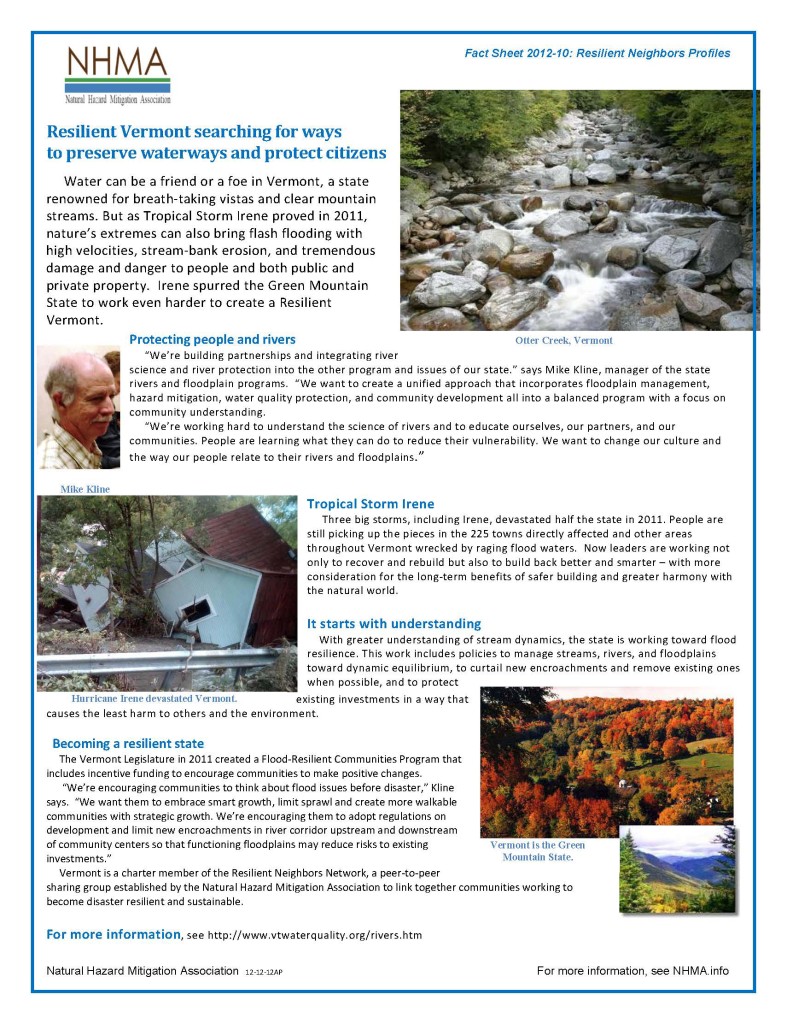 To learn more about Vermont view: Resilient Neighbors Network Community Profiles [pdf] Framework and Profiles
To learn more about Vermont view: Resilient Neighbors Network Community Profiles [pdf] Framework and Profiles
- State of Vermont Official Website
- Vermont Emergency Management
- Vermont Emergency Management Facebook Page
- http://www.kwgs.org/post/vermont-fema-put-us-flood-maps
Resources:
1. A video produced after Tropical Storm Irene explaining the importance of wetland and floodplain protection in protecting our downstream villages and communities. http://www.youtube.com/watch?v=ucb-Y8iipng&feature=player_embedded
2. The Rivers and Roads Training course developed to help mitigate the risks associated with improper restoration of transportation infrastructure after an event: http://wsmd.vt.gov/rivers/roadstraining/
3. A Web page developed by the State after Irene designed to be the central repository of recovery information: http://vtstrong.vermont.gov/
4. Tier 1 training: An Introduction to River Processes and Management
5. Colorado and Vermont Peer-to-Peer Exchange Short and Long-Term Methods for Mitigating Flood Erosion Hazards, Mike Kline, Vermont Rivers Program Manager , July 5, 2014
6. Flood Ready Information about the new web page
Video: NHMA 2012 Workshop – Mike Kline
Above Video: Published on Jun 19, 2013
A short time lapse of the swale making process and some of the benefits of slowing, spreading and sinking stormwater in the landscape. While these include flood and drought prevention simultaneously, they also include fertility maintenance as water soluble nutrients (and soil itself) is retained on the hillsides. All sustainable agricultures throughout time have held onto their water (thus their soil and its nutrients) through careful on-contour maintenance of crops. Ben Falk, M.A.L.D. Whole Systems Design, LLC